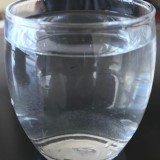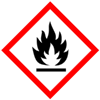Peracetic acid or Ethaneperoxoic acid or Peroxyacetic acid SDS MSDS of Manufacturers & Exporters
Please visit Peracetic acid or Ethaneperoxoic acid or Peroxyacetic acid GMP grade Manufacturers our associates world class FDA-GMP approved, ISO-9001 Certified facility Anmol Chemicals

Peracetic acid or Ethaneperoxoic acid or Peroxyacetic acid CAS Number 79-21-0
Peracetic acid or Ethaneperoxoic acid or Peroxyacetic acid, SDS GHS, Safety Data Sheet
MSDS Sheet 16-Aug-22
1. Product Identification
Product Name/Synonyms: Peracetic acid or Ethaneperoxoic acid or Peroxyacetic acid.
CAS No.: 79-21-0
EINECS EC No.: 201-186-8
Relevant uses and uses advised against (if any): Industrial Manufacturing.
Supplier: As per letterhead.
2. Hazards Identification
GHS, Globally Harmonized System Classification in accordance with 29 CFR 1910
Hazard Class and Category Code(s), Regulation (EC) No 1272/2008 (CLP):
Flammable liquids (Category 3) H226
Organic peroxides (Type F), H242
Acute toxicity, Oral (Category 4) H302
Acute toxicity, Inhalation (Category 4) H332
Skin corrosion (Category 1C), H314
Labeling according to Regulation (EC) No 1272/2008
GHS Label Elements

Corrosive |
GHS Label Elements

Flammable |
Signal Words: Danger
Hazard statements:
H226: Flammable liquid and vapor.
H242: Heating may cause a fire.
H302: Harmful if swallowed.
H332: Harmful if inhaled
H314: Causes severe skin burns and eye damage.
Precautionary statements:
P210: Keep away from heat/sparks/open flames/hot surfaces – No smoking.
P233: Keep container tightly closed.
P240: Ground/bond container and receiving equipment.
P241: Use explosion-proof electrical/ventilating/light/---/equipment.
P242: Use only non-sparking tools.
P243: Take precautionary measures against static discharge.
P261: Avoid breathing dust/fume/gas/mist/vapors/spray.
P264: Wash --- thoroughly after handling.
P270: Do not eat, drink or smoke when using this product.
P271: Use only outdoors or in a well-ventilated area.
P280: Wear protective gloves/protective clothing/eye protection/face protection.
P301+310: IF SWALLOWED: Immediately call a POISON CENTER or doctor/physician.
P303+361+353: IF ON SKIN (or hair): Remove/Take off immediately all contaminated clothing. Rinse skin with water/shower.
P304+340: IF INHALED: Remove victim to fresh air and keep at rest in a position comfortable for breathing.
P305+351+338: IF IN EYES: Rinse cautiously with water for several minutes. Remove contact lenses if present and easy to do – continue rinsing.
P309 + P310 IF exposed or if you feel unwell: Immediately call a POISON CENTER or doctor/physician.
P370+378: In case of fire: Use Water spray, Carbon dioxide (CO2), Foam, Dry powder, and Sand for extinction.
3. Composition/Information on Ingredients
Product Name/Synonyms: Peracetic acid or Ethaneperoxoic acid or Peroxyacetic acid.
CAS No.: 79-21-0
EINECS EC No.: 201-186-8
Solution in Acetic Acid and Water.
4. First Aid Measures
Always seek medical attention after first aid measures are provided.
Inhalation: Remove to fresh air. If not breathing, give artificial respiration. If breathing is difficult, give oxygen. Get medical attention.
Ingestion: Never give anything by mouth to an unconscious person. Get medical attention.
Skin Contact: Wipe off excess material from skin then immediately flush skin with plenty of water for at least 15 minutes. Remove contaminated clothing and shoes. Get medical attention. Wash clothing before reuse. Thoroughly clean shoes before reuse. Get medical attention.
Eye Contact: Immediately flush eyes with plenty of water for at least 15 minutes, lifting lower and upper eyelids occasionally. Get medical attention immediately.
5. Fire Fighting Measures
Flammability of the Product: Flammable.
Flash Points: 40C
Products of Combustion: Carbon dioxide, Carbon monoxide, fumes.
Fire Extinguishing Media: Use Water spray, Carbon dioxide (CO2), Foam, Dry powder, and Sand for extinction. Use extinguishing measures that are appropriate to local circumstances and the surrounding environment. Water spray or fog is preferred, if water not available use dry chemical, CO2, or regular foam. Flammable liquid and vapor. Vapors are heavier than air and may travel to a source of ignition and flash back. Vapors can spread along the ground and collect in low or confined areas. Never direct a water jet in the container to prevent any splashing of the product which could cause spreading of the fire. Cool containing vessels with water jet to prevent pressure build-up, auto-ignition, or explosion.
Extinguishing Media Not recommended: Avoid using solid water jet as it may scatter the fire.
Special Information: In the event of a fire, wear full protective clothing and NIOSH-approved self-contained breathing apparatus with full face piece operated in the pressure demand or other positive pressure mode. At high temperatures it may produce toxic or irritating fumes. These substances will accelerate burning when involved in a fire. Some may burn rapidly with flare burning effect. Some may decompose explosively when heated or involved in a fire. May ignite combustibles (wood paper, oil, clothing, etc.). Thermal decomposition can lead to release of irritating and toxic gases and vapors.
6. Accidental Release Measures
Personal precautions, protective equipment, and emergency procedures: Avoid breathing dust/fumes/gas/mist/vapors/spray. Use individual protective equipment (waterproof boots, suitable protective clothing, safety glasses, etc.). Restrict unprotected personnel from the area. Prevent any contact with hot surfaces.
Environmental precautions: Do not let the product enter drains, soil, or water sources.
Methods and materials used for containment cleanup procedures and Storage: Prevent further leakage or spillage if safe to do so. Do not let product enter drains. Discharge into the environment must be avoided. Remove all sources of ignition. Provide proper ventilation. Absorb the material on a porous, inert material such as earth, sand, or vermiculite. Carefully sweep solid/powder up the material without causing dust. Dispose of in accordance with local regulations. The spillage should be transferred to a suitable container and recovered or disposed of in accordance with local regulations. Because of the danger of spontaneous combustion, any combustible material, such as cloth, used for cleaning spillages, should be saturated with water, and disposed of promptly, preferably by incineration.
7. Handling and Storage
Precautions for safe handling: Apply according to good manufacturing and industrial hygiene practices. Ensure proper ventilation. Provide appropriate exhaust ventilation at places where dust/mist/vapor is formed. Wash thoroughly after handling. Do not drink, eat, or smoke while handling. Do not ingest. Avoid contact with skin, eyes, and clothing. Minimize dust generation. Avoid breathing dust/fumes/gas/mist/vapors/spray. Use individual protective equipment (waterproof boots, suitable protective clothing, safety glasses, etc.).
Conditions for safe storage, including any incompatibilities: Store in cool, dry, and ventilated area away from heat sources and protected from sunlight in tightly closed original container. Keep air contact to a minimum. Do not leave the material container open. Store protected from heat, sparks and ignition sources and incompatible materials. Do not store with incompatible materials like strong oxidizing agents, strong reducing agents, strong acids, strong bases, powdered metals, and organic materials. Keep the product in its original container well sealed, in a dry and ventilated area, away from potential sources of ignition and protected from light. Protect against physical damage. Recommended storage is refrigeration. Avoid heating above 30C.
8. Exposure Controls/Personal Protection
Airborne Exposure Limits: Not Established. Keep it below 0.2 ppm. Provide adequate ventilation.
Ventilation System: A system of local and/or general exhaust is recommended to keep employee exposures as low as possible.
Personal Respirators (NIOSH Approved): For conditions of use where exposure to dust or mist is apparent and engineering controls are not feasible, a particulate respirator may be worn.
Skin Protection: Wear protective gloves and clean body-covering clothing.
Eye Protection: Use chemical safety goggles and/or full-face shield where dusting or splashing of solutions is possible. Maintain eye wash fountain and quick-drench facilities in work area.
Other Control Measures: Maintain good housekeeping in work area. Handle in accordance with good industrial hygiene and safety practice.
9. Physical and Chemical Properties
Appearance Colorless liquid.
Odor: Acrid.
Odor threshold: No data found.
pH: No data found.
Relative density: around 1.23 literature.
Melting point/freezing point: around 0C literature.
Initial boiling point and boiling range: 110C literature.
Flash point: 40C literature.
Auto-ignition temperature: 200C literature.
Decomposition temperature: No information found.
Upper/lower flammability or explosive limits: No information found.
Vapor pressure: No information found.
Vapor density: No information found.
Evaporation rate: No information found.
Flammability (solid, gas): No information found.
Partition coefficient: n-octanol/water: No information found.
Solubility(ies): No information found.
Viscosity: No information found.
10. Stability and Reactivity
Stability: Stable under ordinary conditions of use and storage. Vapor/air-mixtures are explosive at intense warming. Violent reactions possible with: Strong acids, alkalis, reducing agents.
Hazardous Decomposition Products: It emits Carbon dioxide, Carbon monoxide & Toxic Fumes.
Hazardous Polymerization: Will not occur.
Incompatibilities: Heat, strong oxidizing agents, strong reducing agents, strong acids, strong bases. Powdered metals, Organic materials.
Conditions to Avoid: Incompatibles, heat, flame, sparks & light.
11. Toxicological Information
Toxicity data
LD50 Oral Rat = 50 -500 mg/kg/ (35% Peracetic acid)
LD50 Oral Rat = 1026-1780 mg/kg/ (15% Peracetic acid)
LD50 Oral Rat = 185-3622 mg/kg/ (2.6-6.11% Peracetic acid).
LD50 Dermal Rat = 1957 mg/kg/ (15% Peracetic acid)
LD50 Dermal Rat = 1147 mg/kg/ (5% Peracetic acid)
LD50 Dermal Rat = >2000 mg/kg/ (Peracetic acid 0.15%-0.89%)
Carcinogenicity: Not listed by ACGIH, IARC, NTP, or CA Prop 65.
Teratogenicity: No information found.
Reproductive Effects: No information found.
Mutagenicity: No information found.
12. Ecological Information
Toxicity to fish: No information found.
Persistence and Degradability: Soluble in water Persistence is unlikely.
Bioaccumulation/ Accumulation: No information found.
Mobility: Will likely be mobile in the environment due to its water solubility.
Results of PBT and vPvB assessment: No information found.
13. Disposal Considerations
Whatever cannot be saved for recovery or recycling should be managed in an appropriate and approved waste disposal facility.
14. Transport Information
Land Transport DOT USA, TDG Canada & ADR/RID Europe:
UN Number: UN3105
Shipping Name: ORGANIC PEROXIDE TYPE D, LIQUID ((Acetic acid, Peroxyacetic acid))
Hazard Class: 5.2; Packing Group: II.
Sea Transport IMDG/IMO & Air Transport ICAO/IATA:
UN Number: UN3105
Shipping Name: ORGANIC PEROXIDE TYPE D, LIQUID ((Acetic acid, Peroxyacetic acid))
Hazard Class: 5.2; Packing Group: II.
15. Regulatory Information
USA:
SARA 311/312 Hazards: See section 2.
16. Other Information
Disclaimer:
**************************
Our company provides this SDS sheet in good faith but makes no representation as to its comprehensiveness or accuracy. This MSDS sheet is intended only as a guide to the appropriate precautionary handling of the material by a properly trained person using this product. The above information has been compiled from various sources and has the possibility of discrepancy and being outdated information. Individuals receiving the information must exercise their independent judgment and do further search in determining its appropriateness for a particular purpose. In no case shall our company be liable to loss or damages by the product user.
**************************
Specifications of Peracetic acid or Ethaneperoxoic acid or Peroxyacetic acid GMP grade Manufacturers |







